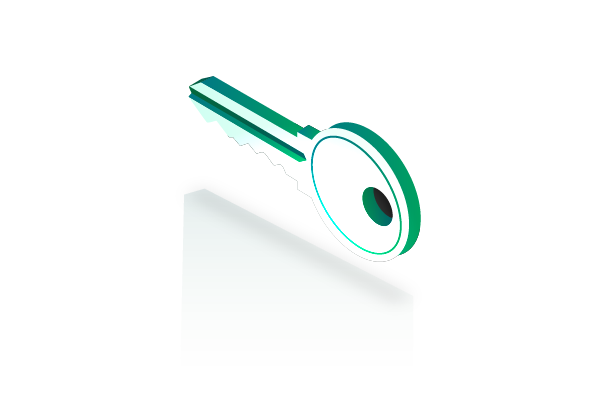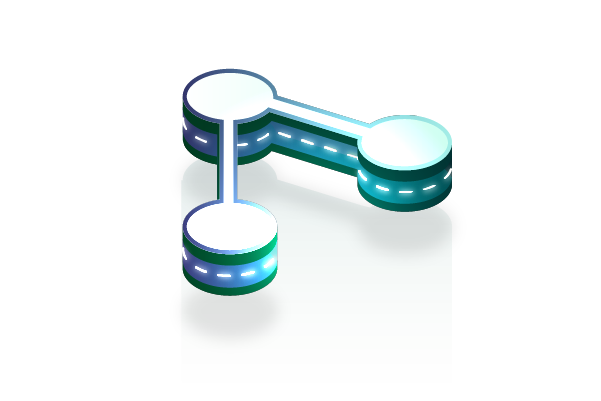The digital landscape is evolving at an unprecedented pace, and at the heart of this transformation is Web 3.0 – the new phase of the internet. This new era promises to reshape our online experiences, making them more interactive, secure, and user-centric. But what makes Web3 distinct from its predecessors? In this guide, we delve into the 10 key features of Web 3.0, providing a comprehensive understanding of its foundation and how it stands to redefine our interaction with the digital realm.
Web3 isn’t just a step forward; it’s a leap into a future where the users regain control, and the possibilities are as boundless as the technology itself. Through decentralization, blockchain, and token-based economics, Web3 is setting the stage for a more democratic and transparent online ecosystem. This article aims to demystify the complexities of Web 3.0, breaking down its core components into digestible insights.
Whether you’re a tech enthusiast, a business professional, or just curious about the next big thing online, understanding these 10 key features will equip you with the knowledge to navigate and possibly contribute to the Web3 space. So, let’s embark on this journey of discovery and explore the building blocks of what might just be the internet’s most transformative era.
Importance of Knowing Web 3.0 Features
Knowing the features of Web3 is becoming increasingly important due to the transformative potential it holds in various sectors. Web3, often referred to as the third generation of the internet, is built on the core concepts of decentralization, blockchain technologies, and token-based economics. Here are some key reasons why understanding Web3 features is important:
- Decentralization and Ownership: Unlike Web2, where data is controlled by centralized entities (like big tech companies), Web3 offers a decentralized internet where users have ownership and control over their own data. Understanding this can empower individuals and businesses to make more informed decisions regarding data privacy and asset control.
- Blockchain and Transparency: Web3 is built on blockchain technology, which ensures transparency and security in transactions. Knowledge of this feature is crucial for industries like finance, supply chain, and healthcare, where secure and transparent record-keeping is essential.
- Tokenization and Value Transfer: Web3 introduces the concept of tokenization, allowing assets to be owned and traded in digital form. Understanding how tokens work is essential for participating in the digital economy, including areas like cryptocurrencies, NFTs (Non-Fungible Tokens), and DeFi (Decentralized Finance).
Also Read: 5 Ways To Recover Funds From Cryptocurrency Scam
- Smart Contracts: These are self-executing contracts with the terms of the agreement directly written into code. They automate and enforce contracts, providing a new level of efficiency and trust in business transactions. Knowing how they work can revolutionize industries by simplifying processes and reducing the need for intermediaries.
- Interoperability and Scalability: Web3 technologies are designed to be interoperable, meaning they can interact and integrate more seamlessly. This feature is essential for creating a more connected and accessible digital world, where different services and platforms can work together without friction.
- Privacy and Security: With the rise of cyber threats, understanding the enhanced privacy and security features of Web3 is crucial. Technologies like zero-knowledge proofs offer new ways to authenticate and transact without exposing sensitive information.
- Innovation and New Business Models: Web3 opens the door for entirely new business models and services, such as decentralized autonomous organizations (DAOs), decentralized applications (DApps), and more. Understanding these concepts is crucial for entrepreneurs and businesses looking to innovate and stay competitive in a rapidly evolving digital landscape.
Understanding the features of Web 3.0 is crucial for anyone looking to navigate the future of the internet securely and effectively. It offers a paradigm shift in how we interact with digital services, emphasizing user empowerment, security, and a more interconnected digital ecosystem.
10 Key Features of Web 3.0 Technology

Web 3.0 represents the next evolution of the internet, often referred to as the decentralized web. It signifies a shift from the centralized platforms of Web 2.0, such as social media sites and search engines that own user-generated content, to a decentralized, user-centric model. Here are 10 key features of Web 3.0:
1. Decentralization
Forms the bedrock of Web3, fundamentally shifting the control and ownership of data from centralized entities to a distributed network of nodes, usually orchestrated by blockchain technology. This paradigm not only mitigates risks associated with central points of failure, such as server outages or data breaches but also democratizes the digital landscape, ensuring that every participant has a stake in the network.
While decentralization promotes autonomy and security, it’s not without challenges. Scalability issues often arise as the consensus mechanisms that ensure trust and security in a decentralized environment can also lead to increased transaction times and higher resource consumption, posing a significant hurdle in the race to mainstream adoption.
2. User Sovereignty
User Sovereignty in Web3 is a revolutionary shift from the norms of Web2, placing the individual at the center of the digital universe. Users gain unprecedented control over their data, deciding who can access it and under what terms, a stark contrast to the data monetization models of many current platforms.
This empowerment, however, comes with increased responsibility. Users must become more proactive in managing and securing their data, navigating a landscape where they are the ultimate custodians of their digital identities.
3. Trustless and Permissionless
This nature of Web3 redefines interactions on the internet. By leveraging cryptographic techniques and robust consensus mechanisms, parties can transact and interact directly, eliminating the need for intermediaries and opening the systems to anyone, anywhere.
This paradigm fosters a level of inclusivity and access previously unattainable. However, engineering systems that are secure, resilient, and immune to various forms of attacks and fraud within a trustless framework is a complex task, often leading to innovative yet intricate solutions.
4. Native Payments
Native Payments via cryptocurrencies are a cornerstone of Web3, offering a new financial paradigm where value can be transferred as easily as information across the internet.
This innovation not only facilitates faster and more secure transactions but also promises to democratize access to financial services globally. Nevertheless, the volatility of cryptocurrencies and the evolving landscape of regulatory frameworks present a myriad of challenges, from user adoption to compliance, requiring a careful balance between innovation and stability.
5. Interoperability
This is a guiding principle of Web3, envisioning a seamlessly connected digital ecosystem where diverse applications and blockchains can communicate without friction. This interoperability promises a cohesive user experience, allowing for the free flow of data and assets across platforms.
However, achieving this level of interoperability without compromising security and user privacy is a formidable challenge, necessitating the development of standard protocols and robust interfaces.
6. Consensus Mechanisms
The engines of trust in Web3, facilitating agreement across decentralized networks. Mechanisms such as Proof of Work or Proof of Stake ensure that all network participants can trust the system’s integrity without trusting each other.
While these mechanisms provide the foundation for secure and democratic systems, they come with trade-offs between speed, security, and decentralization. For instance, the energy consumption of Proof of Work has sparked a significant debate, prompting a search for more sustainable alternatives.
7. Smart Contracts
It revolutionizes agreements by embedding the terms directly into code, which is then executed automatically, ensuring compliance without the need for intermediaries. This automation not only reduces friction and costs associated with traditional contracts but also opens up new avenues for innovation across industries.
However, the reliability of smart contracts is only as strong as the code they are written in, making them susceptible to bugs and vulnerabilities, and highlighting the need for rigorous testing and auditing protocols.
8. Privacy by Design
A fundamental aspect of Web3, embedding privacy into the architecture of systems from the ground up. Advanced cryptographic techniques, such as zero-knowledge proofs, enable users to interact and transact with a level of privacy that was previously unattainable.
Balancing this privacy with regulatory requirements, such as anti-money laundering laws, presents a complex challenge, requiring innovative solutions that can cater to both privacy concerns and compliance mandates.
9. Semantic Web
It represents the next leap in making the internet more intelligent, enabling machines to understand and interpret data like humans do. This understanding paves the way for more intelligent applications and services, transforming how we search for information and interact with digital content.
However, realizing the semantic web at scale involves significant technical challenges, requiring changes in how data is structured, stored, and processed.
10. Integration of Artificial Intelligence and Machine Learning
Web3 promises to create a more adaptive, responsive, and personalized digital experience. These technologies have the potential to automate complex tasks, unearth insights from vast datasets, and foster innovation at an unprecedented scale. However, they also raise important ethical considerations, from data privacy to the potential for bias in decision-making processes, necessitating a thoughtful approach to the development and deployment of AI and ML systems.
These features collectively represent a significant shift from the current internet (Web2) to a more open, connected, and intelligent network, promising to reshape how we interact with the digital world.
Navigating the Token-Based Economy of Web 3.0

In the emerging landscape of Web 3.0, the token-based economy stands as a transformative shift from the traditional models of value exchange and interaction on the internet. This evolution is not merely a change in the medium of exchange but a comprehensive overhaul of how online services, communities, and ecosystems operate and thrive.
Tokens in the Web3 context are multifaceted. They’re not only currencies but also represent assets, utilities, and even identities within digital realms. This versatility allows for an unprecedented level of interaction and transactional fluidity within online communities. For instance, tokens can represent ownership stakes in a project (security tokens), access rights to certain services (utility tokens), or even participatory rights in governance models (governance tokens).
The introduction of these tokens is reshaping the online economy in several profound ways:
- Decentralization of Control: Traditional online platforms often have a centralized authority controlling the exchange of value, content, and the rules of interaction. In contrast, the token-based economy of Web3 distributes this control among its participants. This decentralization is often facilitated by blockchain technology, ensuring transparency and equity in transactions.
- Incentivization and Monetization: Tokens create direct economic incentives for users and creators. Users can earn tokens through various means, such as contributing to a platform, participating in governance, or providing liquidity. For creators and service providers, this opens up new avenues for monetization, enabling them to be compensated directly and fairly for their contributions.
- Enhanced User Experience and Engagement: With tokens, the user experience is enhanced by granting users more control over their data and the value they generate. This empowerment can lead to increased engagement, as users have a tangible stake in the platform or community.
- New Business Models and Opportunities: The token-based economy paves the way for innovative business models. For instance, decentralized autonomous organizations (DAOs) operate without traditional management structures, governed by smart contracts and collective decision-making of token holders.
- Challenges and Considerations: While the token-based economy offers numerous benefits, it also presents challenges. Regulatory uncertainty, scalability issues, and security risks are some of the hurdles that need to be addressed. Moreover, as the value of tokens can be highly volatile, both users and creators must navigate the associated financial risks.
The token-based economy of Web3 represents a fundamental shift in how value is created, exchanged, and managed online. It fosters a more inclusive, participatory, and decentralized internet, empowering users and creators alike. However, navigating this new landscape requires a thorough understanding of its mechanics, opportunities, and risks. As the infrastructure of Web3 continues to evolve, so too will the ways in which we engage with and understand the digital economy.
The Intersection of AI and Web 3.0

The fusion of Artificial Intelligence (AI) and Machine Learning (ML) with Web3 marks a significant evolution in the digital domain, championing decentralization, enhanced user control, and token-based economies. This integration promises to revolutionize the digital landscape by harnessing AI and ML’s capabilities to analyze, learn from, and predict based on the vast data within Web 3.0 environments. The result is an intuitive, adaptive digital experience where AI-driven insights and automation coexist with the core Web3 principles of user privacy, data sovereignty, and secure, transparent transactions.
Also Read: What Is Wormhole Crypto? Detailed Analysis of Its Components and Workflow
In practical applications, this synergy is set to redefine traditional systems and practices across various sectors. From Decentralized Autonomous Organizations (DAOs) leveraging AI for governance to transformative changes in finance, healthcare, and supply chain management, the combination of AI, ML, and Web3 technologies offers unprecedented efficiency, transparency, and user empowerment. This integration not only enhances system performance and user experience but also aligns with the decentralized, user-centric ethos of Web3.
However, this emerging nexus also brings forth complex challenges, particularly in data governance, ethical AI deployment, and maintaining a balance between automation and human oversight. Addressing these challenges is crucial to ensure that the intersection of AI, ML, and Web3 upholds ethical standards, security, and user trust, paving the way for a future where digital systems are not just more intelligent and efficient, but also more aligned with the principles of user empowerment and digital sovereignty.
Conclusion
Web3 is not just a new iteration of the internet; it’s a complete overhaul of how we perceive and interact with the digital world. The 10 key features of Web 3.0, from decentralization to the integration of AI and ML, are crafting a future where the internet is more secure, user-centric, and innovative. As we stand on the brink of this new era, the potential for transformation is immense, but so is the need for understanding and adaptation.
The journey into Web3 is an opportunity for individuals, businesses, and societies to redefine their roles in the digital ecosystem. By embracing the principles of decentralization, blockchain technology, and token-based economics, we can contribute to a more equitable and sustainable online future. As we continue to explore and innovate, the essence of Web 3.0 will become increasingly tangible, shaping an internet that aligns with the values and needs of its users.
In conclusion, while the complexities of Web 3.0 might seem daunting, its core features lay the groundwork for a more democratic, secure, and user-empowering digital age. As we venture further into this new territory, staying informed and engaged will be key to navigating and leveraging the vast opportunities that Web3 promises. The future of the internet is here, and it’s decentralized, tokenized, and ready for those who dare to embrace it.
Disclaimer: The information provided by HeLa Labs in this article is intended for general informational purposes and does not reflect the company’s opinion. It is not intended as investment advice or recommendations. Readers are strongly advised to conduct their own through research and consult with a qualified financial advisor before making any financial decisions.

Joshua Soriano
I am a writer specializing in decentralized systems, digital assets, and Web3 innovation. I develop research-driven explainers, case studies, and thought leadership that connect blockchain infrastructure, smart contract design, and tokenization models to real-world outcomes.
My work focuses on translating complex technical concepts into clear, actionable narratives for builders, businesses, and investors, highlighting transparency, security, and operational efficiency. Each piece blends primary-source research, protocol documentation, and practitioner insights to surface what matters for adoption and risk reduction, helping teams make informed decisions with precise, accessible content.
- Joshua Soriano#molongui-disabled-link
- Joshua Soriano#molongui-disabled-link
- Joshua Soriano#molongui-disabled-link
- Joshua Soriano#molongui-disabled-link

